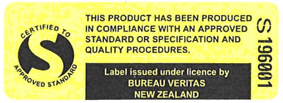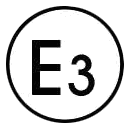It’s the law in New Zealand that all children in cars must travel in a child restraints until at least their 7th birthday. If there is a child restraint available in the car, they must use it when travelling until they turn 8.
As the driver, you are responsible for making sure that any child under 7 years old is properly restrained in a car seat that’s appropriate for their age. Children must not travel in the car if you can’t put them in an approved child restraint.
| Age of child | The law says you must: |
|---|---|
| Until their 7th birthday |
Correctly secure your child in an approved child restraint. Approved child restraints include:
|
| From their 7th to their 8th birthday | Correctly secure your child in an approved child restraint if one is available in the vehicle (and if not, in any child restraint or safety belt that is available) |
| From 8th birthday to 14 years old | Must use safety belts if available. If not available, they must travel in the back seat. |
| Over 14 years old | Must use safety belts where they are available. |
International best practice recommends the use of a child restraint or booster seat until your child reaches 148 cm tall. Child restraint and medical professionals recommend that you keep your baby in a rear-facing restraint until as old as practicable, at least until they are 2 years of age.
Don’t be in a hurry to move your child to the next restraint. If your child is still the right height and weight for the one they’re in, keep them in the restraint they’re using until they’ve grown out of the specified limits.
There are important considerations when you come to selecting a child restraint. To give your child the best protection when travelling, the restraint must:
Whether it’s brand new or second hand, all child restraints must meet an approved standard. This ensures a restraint's design and construction are laboratory tested under crash conditions and provide the best protection when used according to manufacturer’s instructions.
You can make sure the child restraint is legal for use in New Zealand by looking for its certification. There are three types of certifications that we use in New Zealand:



All seats have an expiry date, and once they reach this date they must be disposed of. Check the marker or sticker on your seat to check that it is not expired. If your seat doesn’t have a sticker, or you are unsure, contact a child restraint technician who will be able to advise you.
If your restraint has been in a collision don’t assume that it’s safe to use.
Contact a child restraint technician to have your seat assessed.
Find a child restraint technician
There is no way to re-certify a seat which has been in a collision. If it is no longer safe to use it must be disposed of.
To find out if your child's restraint has been recalled, visit the Product Safety website and search by name of the manufacturer and model number.
Product Safety website - recalled products(external link)
Requirements for how the restraints are attached are part of the American and European standards. Restraints that comply with these standards come with connectors called LATCH (lower anchors and tethers for children) in the United States or ISOFIX in Europe. Both systems have lower anchors in the vehicle and lower attachments on child restraints. This method of installation allows a child restraint to be snapped into place instead of being held by the safety belt.
Some restraints complying with the joint Australia/New Zealand standard also have ISOFIX lower attachments.
Watch our videos for tips on buying and installing your child restraint:
Installing and using a child restraint
A child doesn't have to be seated in an approved child restraint if they're travelling in a:
vintage vehicle (first registered before 1955) that is not fitted with safety belts
passenger service vehicle (eg taxi, shuttle, bus) when no appropriate child restraint is available.
However, where a safety belt is available, the child must be restrained, and where an approved child restraint is available, it must be used (where appropriate for the child's age and weight).
Taxi companies may provide child restraints if you give them 24-hours notice.
Note that the driver of a passenger service vehicle, such as a bus or taxi, is not legally responsible for ensuring safety belts are used (if fitted). However if an appropriate child restraint is available in the vehicle then that taxi driver is responsible for ensuring that a child under seven is restrained in it (the same as any other driver).
Note that the driver of a bus is not responsible for ensuring a child is appropriately restrained. It is up to the person in charge of the child to make sure they are correctly restrained.
A child aged seven or over, but under the age of 15, may be seated in the front seat of a vehicle without an approved suitable child restraint if there is no back seat, or the back seat is already full of other children under 15 years old. The child must be restrained using the available safety belt.
In exceptional circumstances a medical practitioner may provide a certificate to provide exemption from the use of a child restraint for a specified period of time.
If you're bringing a child restraint with you into New Zealand it must comply with one of the following approved standards:
You can hire child restraints for your visit from a number of hire outlets. We recommend that you leave your child restraint at home and hire a child restraint in New Zealand if your child restraint does not meet these standards.
It's unlikely that you'll be refused entry if you take a restraint other than one of those recommended for the country. Most problems are likely to arise over insurance if you have a crash. It is likely that insurance will not be paid out if the restraint you are using is not one recommended for that specific country.
While age requirements for the use of child restraints vary from state to state, all states require them to be used. The one accepted standard for a child restraints throughout Australia is the joint Australia/New Zealand standard AS/NZS 1754.
Both infant and child restraints have tether straps and all vehicles manufactured in Australia are required to have the tether anchorages inserted, making installation of the tether easy.
If you want to use your child’s restraint on the aircraft you need to check that it is certified for aircraft use (check the instruction book or check for a sticker on the restraint). You will also need to ask the airlines you're travelling with whether they will accept your child restraint for use on the aircraft.
Some airlines take child restraints as luggage at no cost. Check with the airline you are travelling with beforehand.
Find more information about child restraints: